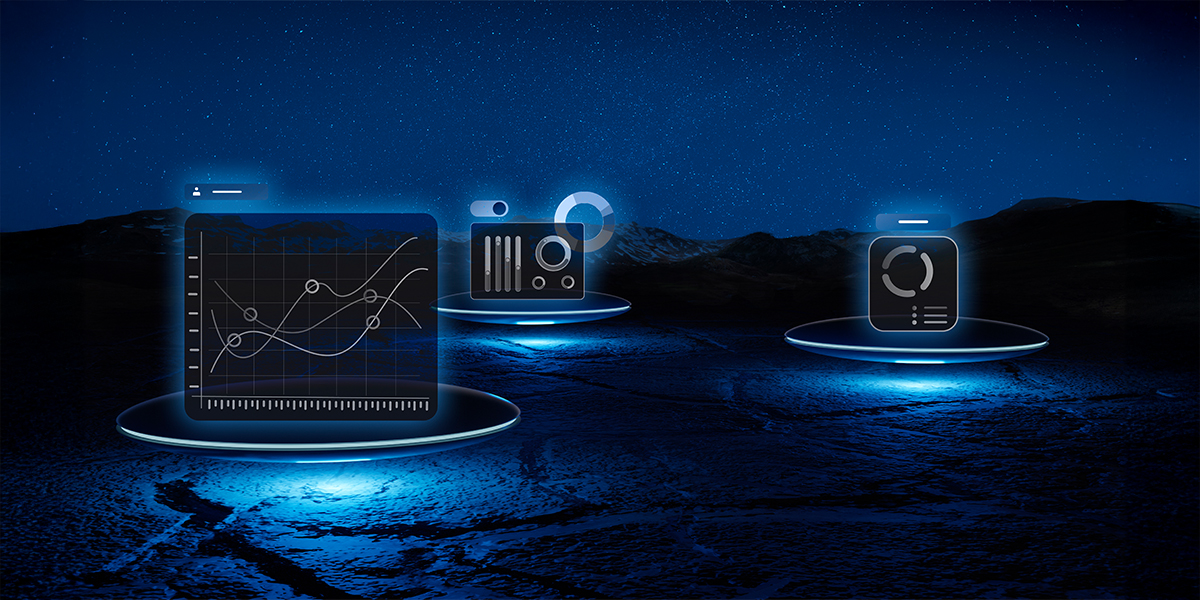The role of data lake architecture in multi-cloud strategies

Highlights:
- Combines the flexibility of lakes with the structure of warehouses.
- Supports seamless data access across AWS, Azure, and GCP.
- Enables real-time analytics without duplicating data.
- Enhances data governance with built-in security controls.
- Scales effortlessly with fluctuating multi-cloud workloads.
- Open standards ensure interoperability and future readiness.
One lake to unify the storm
Think about the chaos of managing data across AWS, Azure, and Google Cloud, each with its own rules and tools. Each platform offers different tools, structures, and rules. For many enterprises, this is reality, not a thought experiment. And it’s messy.
The race to embrace multi-cloud is on. But without a clear way to unify data across these environments, organizations hit a wall. That’s where the concept of a data lake house enters the scene. It’s not just a new buzzword; it’s the bridge between chaos and clarity.
The new normal: multi-cloud complexity
Let’s rewind a bit. Enterprises today don’t choose just one cloud provider—they choose several. Maybe AWS powers your compute-heavy workloads. Azure handles enterprise applications. Google Cloud takes care of AI and ML. This mix-and-match approach offers flexibility but creates fragmentation.
Different storage layers, metadata formats, and governance models. And worst of all, siloed insights.
Here’s the twist: while your infrastructure sprawls across clouds, your business needs a unified view of data. You need a single pane of glass across structured, unstructured, and real-time streams. Enter the modern data lake architecture.
Data lakes: then vs now
Old-school data lakes worked like digital dumpsters. Everything was dumped in—images, logs, text, transactional data, with the hope that something useful would emerge later. But without structure or governance, these lakes turned into data swamps.
Modern data lakes changed that game. They brought layers. Enforced metadata standards. And they supported schema-on-read. Suddenly, it wasn’t about dumping data anymore. It was about organizing it for scalable, flexible consumption.
But here’s the kicker: even modern data lakes struggled in multi-cloud environments. They weren’t designed for hybrid agility. They were cloud-dependent, storage-tight, and often lacked interoperability.
That’s where the data lake house begins to shine.
Meet the data lake house
Think of the data lake house as the best of both worlds. It combines the raw flexibility of data lakes with the structure and governance of a warehouse. It stores everything from transaction logs to TikTok videos and makes it query-ready.
So instead of waiting to transform your data, you read it when needed. That means faster prototypes, faster insights, and more room to experiment.
But more importantly, it works across cloud environments. That’s what makes it central to any multi-cloud strategy.
Why it matters in multi-cloud strategies
So why does the data lake house model fit so well with multi-cloud setups?
Because it’s built to be cloud-agnostic. It doesn’t care whether your data is in S3, Azure Blob Storage, or Google Cloud Storage. It abstracts the infrastructure and focuses on accessibility, lineage, and governance.
Let’s say you want to analyze customer behavior data on Google Cloud and merge it with financial data on AWS. With a data lake house, you don’t need to migrate or replicate. You query where the data lives.
That’s less latency. Less cost. And more control.
Layers that bring order to chaos
A data lake house typically includes multiple layers, each with its purpose.
- Raw Layer: Where data lands in its native form. No transformations, no filters.
- Cleansed Layer: Data is structured, cleaned, and ready for analysis.
- Application Layer: This is where business logic, security, and operational workflows kick in.
Each layer helps maintain governance while supporting rapid analytics. These layers are especially powerful when data is coming from multiple clouds.
And the best part? Analysts don’t need to know where the data lives. They just access it.
Security and governance-built in
Multi-cloud isn’t just about storing data everywhere. It’s also about controlling it everywhere. And that’s tough. Different cloud providers have different access protocols, encryption standards, and monitoring tools.
The data lake house offers a way to centralize data governance across these environments. With object-level access control, data versioning, and schema enforcement, it ensures data quality and regulatory compliance, no matter where your storage lives.
It also provides consistent metadata tagging, audit trails, and access logs, which are essential for meeting enterprise security standards.
Real-time use cases that prove it works
Let’s get real. Here’s how a data lake house works in practice:
- A prominent U.S.-based national retailer transitioned its Snowflake workloads from Azure to Google Cloud Platform (GCP) to modernize over 300 complex, near-real-time data ingestion pipelines. This migration aimed to reduce costs and enhance real-time access to analytics, enabling the retailer to make data-driven decisions more efficiently.
- Financial services firms are increasingly adopting data lakehouse architectures to improve data governance and risk management. By integrating data across various platforms, these institutions can perform real-time analytics and ensure compliance with regulations. For instance, Google Cloud’s solutions help financial organizations manage data governance effectively, allowing for better decision-making and risk assessment.
- Umpqua Health, an Oregon-based coordinated care organization, adopted a data lakehouse infrastructure to enhance the delivery of updated data to care teams. This implementation aimed to improve processes and patient outcomes by providing rapid access to comprehensive health data.
These aren’t just theoretical edge cases. They’re everyday challenges that this architecture solves—at scale.
Where do data lakes live
Data lakes were once rooted in on-premises data centers. But that’s quickly changing. Today, most organizations are moving them to the cloud. Why? Because cloud platforms offer faster, more scalable ways to manage and analyze massive datasets.
This shift is largely driven by the rise of managed big data tools—like Spark and Hadoop—offered by cloud giants such as Google, Microsoft, and AWS. Tools like Google Dataproc, Azure HDInsight, and Amazon EMR make it easier to run complex analytics without managing infrastructure.
Another big reason for the move? Cloud-based object storage like Amazon S3, Azure Blob Storage, and Google Cloud Storage. These services give businesses flexible, cost-effective alternatives to legacy systems like HDFS.
Performance without trade-offs
One of the biggest myths? That flexibility comes at the cost of performance.
In reality, modern data lake house architectures are designed for speed. They support concurrent queries without slowing down. Isolate workloads so a BI dashboard refresh doesn’t impact a data science model training in parallel.
They even support auto-scaling. Need to process 10 petabytes today and just 100GB tomorrow? No problem. The infrastructure scales up and down with demand.
That’s what makes this architecture ideal for fluctuating multi-cloud workflows.
Open-source meets enterprise scale
Another advantage? Most data lake house platforms are built on open standards.
Tools like Apache Iceberg, Delta Lake, and Hudi are popular backbones. They integrate with Spark, Presto, Databricks, and even Snowflake. That means you can mix and match tools without vendor lock-in.
Want to switch from Azure Synapse to BigQuery? You can. Your data lake house stays intact.
It’s this open ecosystem that makes it future-proof, especially as cloud providers evolve.
Common pitfalls to avoid
Of course, not everything is rosy. Implementing a data lake house across multi-cloud requires careful planning.
- Metadata management is critical. Poorly tagged data creates chaos.
- Ingestion pipelines need to be resilient. Broken data flows mean delayed insights.
- Access controls must be strict. Otherwise, your compliance teams won’t sleep.
But these aren’t deal-breakers. They’re reminders that architecture is only as good as its execution.
Making it work: best practices
Here’s what we’ve seen work well:
- Start with a use case, not a tech stack. Align architecture with business needs.
- Invest in orchestration tools. Moving data across clouds without automation is a nightmare.
- Layer your storage. Keep raw, cleansed, and trusted data separate to maintain order.
- Design for discovery. Data catalogs and search are not optional.
- Keep security centralized, even if your data is decentralized.
A data lake house that’s thoughtfully planned becomes more than architecture. It becomes the heart of your data strategy.
Looking ahead
Multi-cloud isn’t slowing down. If anything, it’s accelerating. Enterprises are diversifying cloud vendors to manage cost, minimize risk, and unlock the best tools each has to offer.
In this future, data needs to move fluidly. Not through brittle ETL scripts, but through intelligent, scalable architectures.
And that’s what the data lake house delivers: freedom without chaos. Structure without rigidity. Scale without silos.
Read more: How data lake architecture supports scalable data analytics in the cloud
Wrapping it up
Multi-cloud is complex, but your data strategy doesn’t have to be. With a well-designed data lake house, you can unify fragmented data, reduce latency, ensure governance, and unlock new value.
Whether you’re powering a global AI platform or just trying to get a single version of truth across departments, this architecture gives you the foundation to move fast, stay flexible, and stay secure.
So, the next time someone mentions yet another cloud migration, ask them: “How’s your data lake house holding up?” Because that might just be the difference between a tech stack and a data strategy that works. Our data engineering services help the implementation of scalable data lakes.






